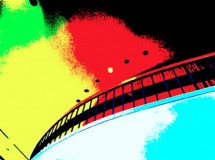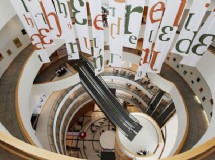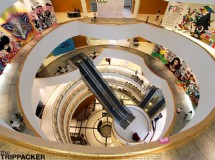A new observatory that promises to give Wisconsin astronomers unique access to the southern sky is now a prominent feature on a remote South African plateau.
The observatory that will house the largest optical telescope in the Southern Hemisphere, known as the Southern African Large Telescope (SALT), is now nearly complete, according to astronomers at the University of Wisconsin-Madison. Although the telescope itself is still 18 months from completion, the mirror segments that will make up the 11-by-10-meter hexagonal primary mirror are starting to come together, says Matthew Bershady a UW-Madison professor of astronomy who is helping to oversee planning and construction of the new observatory.
"We are at a point where we have a structure that is nearly completed," says Bershady of the observatory situated 220 miles from Cape Town on a mountain plateau at the southern end of the Kalahari Desert. "Now, we are starting to populate the (telescope) truss with glass."
The $18 million SALT Observatory is being built by a consortium of government and academic institutions from six countries. In addition to UW-Madison, Rutgers and Carnegie Mellon universities, Germany's University of Gottingen, the University of Canterbury in New Zealand, the United Kingdom Consortium, and the governments of Poland and South Africa are partners in the SALT consortium.
UW-Madison's contribution is a $3 million imaging spectrograph that is being built under the direction of astronomy Professor Kenneth H. Nordsieck. A spectrograph is a device that breaks light down into its constituent wavelengths, each of which has a different story to tell about the star or galaxy from which the light is gathered.
"We're past the design stage now," says Nordsieck of the 500-kilogram instrument that will be at the heart of the new observatory.
"We're cutting metal and polishing glass."
The Wisconsin spectrograph will be the telescope's primary scientific instrument. Positioned high above the huge segmented mirror at the prime focus of the telescope, the device will be capable of capturing spectra at a rate of 10 times a second.
To explain the importance of spectroscopy to astronomy, one spectrum - in the words of one astronomer - is worth a thousand pictures.
The device, says Nordsieck, will sample light in the near ultraviolet part of the electromagnetic spectrum: "This is light that our eyes can't see, but it still gets through the atmosphere. It's the same kind of light that causes sunburn."
In addition, the spectrograph will be capable of doing polarimetry, measuring how light waves are scattered as they bounce off objects in space and are pushed and pulled by the immense magnetic fields of interstellar space. Polarimetry, Nordsieck says, helps reveal geometric information, giving astronomers insight into how starlight interacts with the objects it encounters.
"We will also have one of the first large Fabry-Perot devices," he adds. "It is basically a tunable filter" capable of imaging a large part of the sky.
Fittingly, among the system of lenses to be included in the spectrograph will be a set made of sodium chloride - or salt.
Together, the large, segmented primary mirror and the novel scientific instrumentation will position SALT to break plenty of new ground in the southern skies.
"One of the big things this telescope will be tuned for are the Magellanic Clouds," says Bershady. "They are important because they are the galaxies nearest to our own, and they offer the best opportunity to study stars and galaxies outside of the Milky Way. It's always a good thing to look outside of your own immediate environment to find out how unique you are, if at all."
The SALT construction schedule is right on time, Bershady adds. "That we haven't slipped at all is amazing," he says. "Our hope is to stay on track for first light in late 2004."
SHARE







































